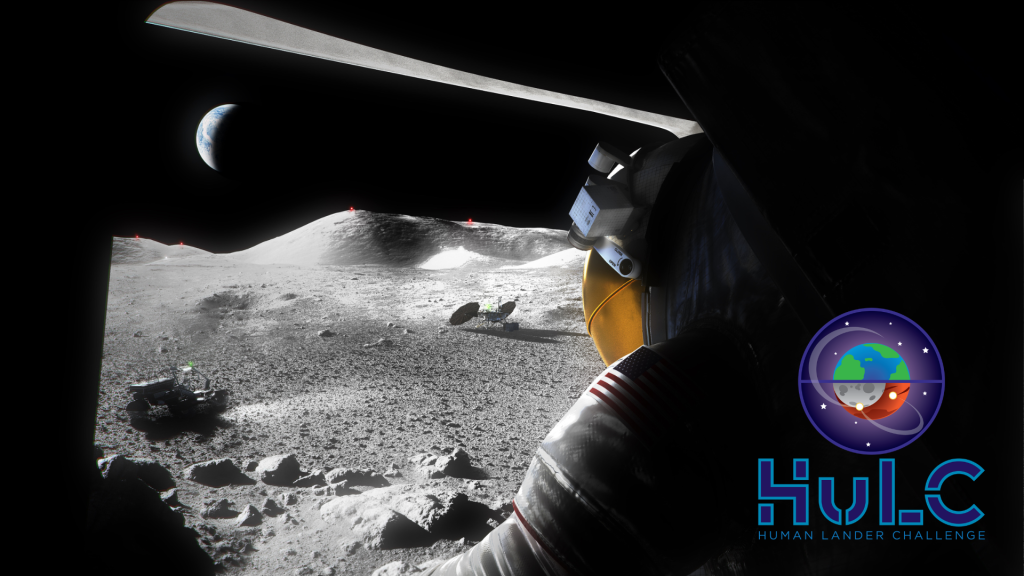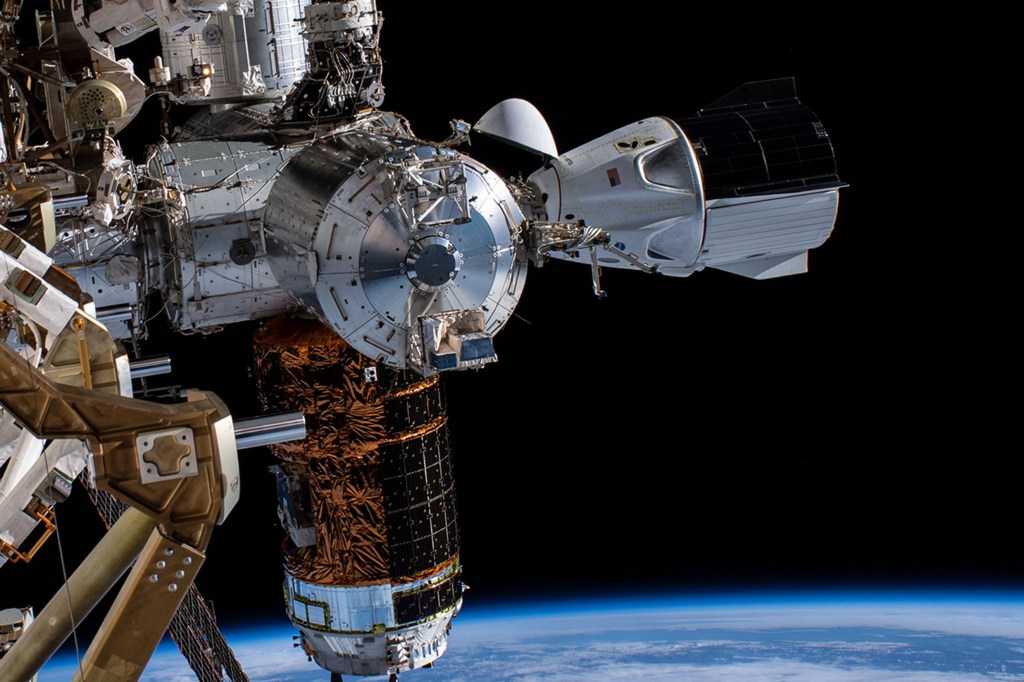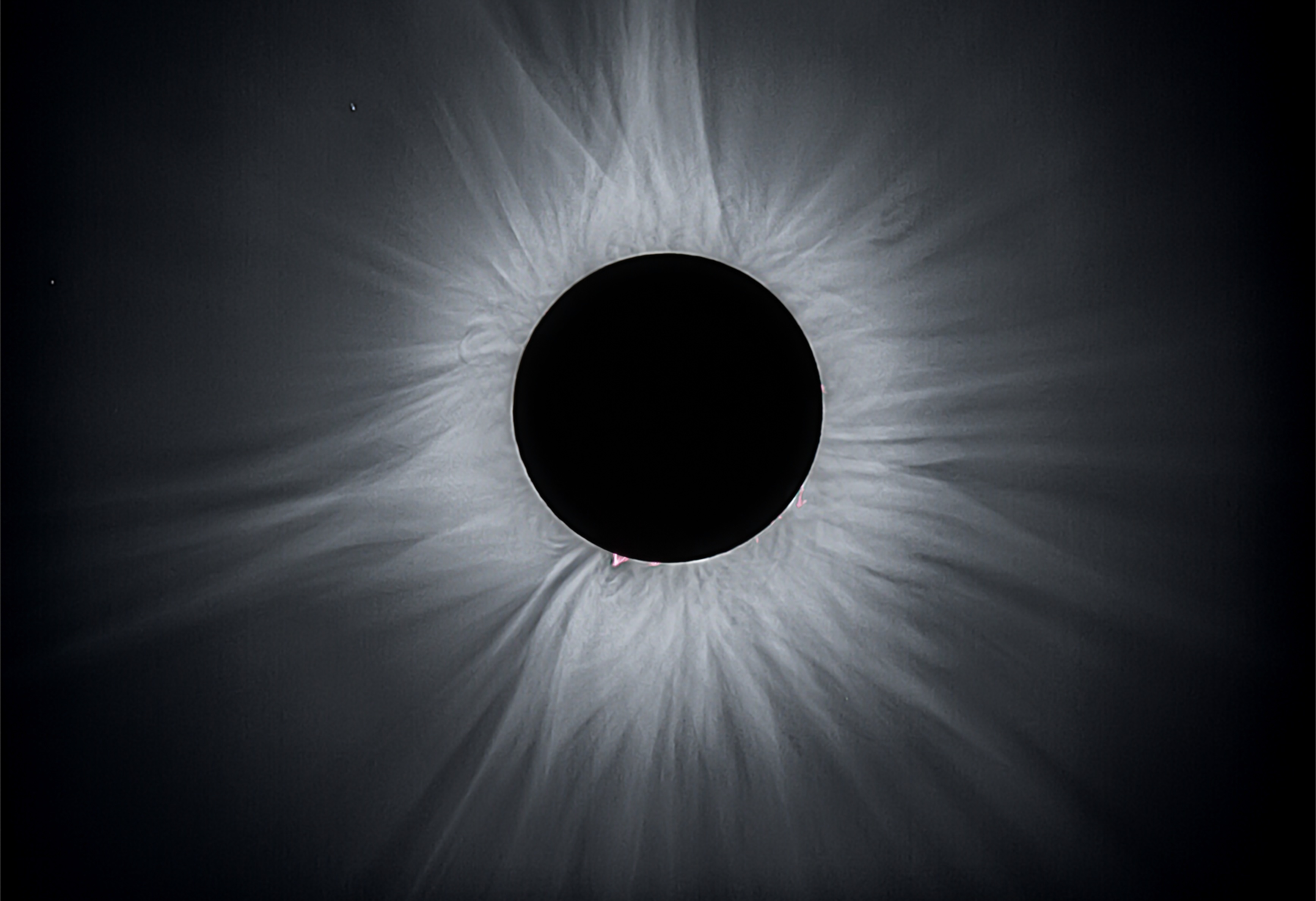After completing the historic first international docking in space and two days of crew visits between the two vehicles, the Soviet and American spacecraft of the Apollo-Soyuz Test Project (ASTP) continued their independent flights after undocking. Soviet cosmonauts Aleksei A. Leonov and Valeri N. Kubasov remained in space for two days after the conclusion of the joint activities, landing in Soviet Kazakhstan in July 21, 1975, with Soviet television providing a live broadcast of the event for the first time. Apollo astronauts Thomas P. Stafford, Vance D. Brand, and Donald K. “Deke” Slayton stayed in orbit for five days after undocking, splashing down on July 24 in the Pacific Ocean. During their last days in orbit, the crews continued to perform a suite of joint and independent science experiments.



Left: ASTP Soyuz spacecraft descending on its main parachute. Middle: Soviet controllers
in Mission Control in Houston cheer as they watch the Soyuz landing. Right: ASTP Soyuz
cosmonauts Kubasov (left) and Leonov talk to the press a few minutes after their landing.
After undocking from Apollo on July 19, Leonov and Kubasov continued Earth and solar photography tasks and imaged a joint fungal growth experiment. They rehearsed the procedures for reentry and provided a televised tour of their spacecraft for Soviet audiences. On July 21, they donned their Sokol launch and entry suits and climbed into their couches in the Soyuz spacecraft’s Descent Module (DM). They performed the four-and-a-half minute deorbit burn precisely on schedule, followed nine minutes later by the separation of the DM from the Orbital and Instrument Modules. After reentry through the Earth’s upper atmosphere, worldwide audiences were treated for the first time to live television views of the Soyuz descending on its orange and white parachute. About one meter above the ground, retrorockets fired to slow the spacecraft’s speed at touchdown, raising a large cloud of dust from the arid Kazakh steppe. Recovery forces reached the capsule within minutes and first Kubasov then Leonov emerged, a bit shaky after their six-day flight but otherwise in excellent health. Recovery forces flew them to the Baikonur Cosmodrome, where they held a press conference and rested for two days. Leonov and Kubasov returned to Moscow on July 23, greeted by a large cheering crowd at the Soviet capital’s Vnukovo Airport. The descent module of the ASTP Soyuz is on display at the RKK Energia museum in Korolev, just outside of Moscow.

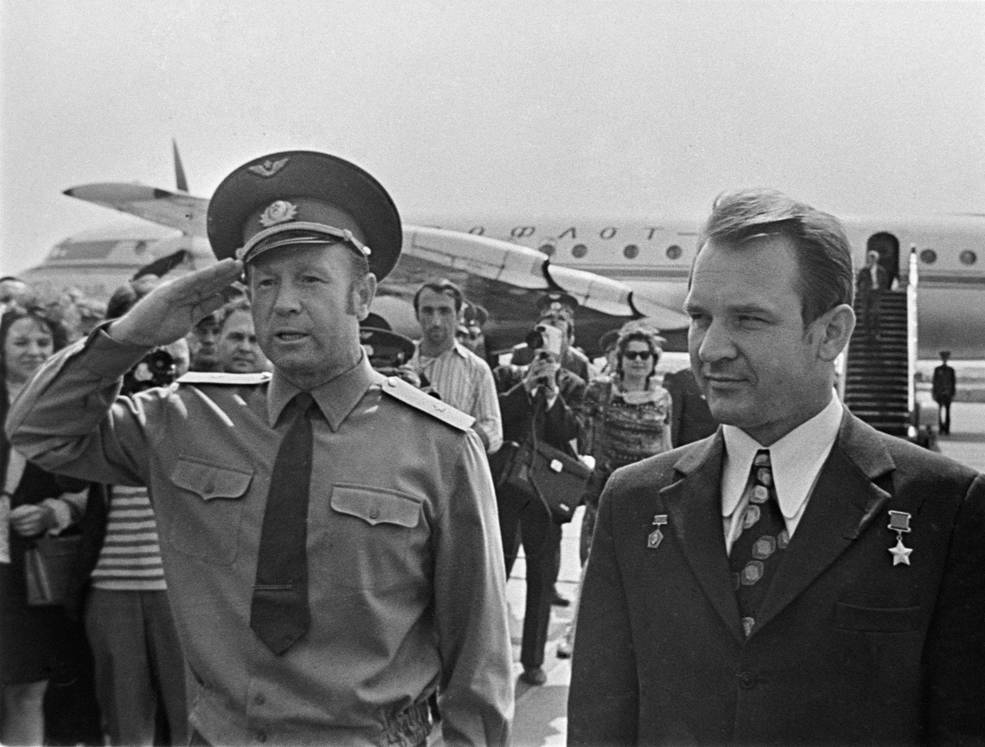
Left: ASTP Soyuz cosmonauts Kubasov (left) and Leonov hold a press conference at
Baikonur a few hours after landing. Right: Leonov (left) and Kubasov upon
arrival at Moscow’s Vnukovo Airport.
The policy of openness that characterized the ASTP Soyuz mission did not extend to other Soviet space programs. Just five days after Leonov and Kubasov’s landing, the Soyuz 18 crew of Pyotr I. Klimuk and Vitali I. Sevastyanov returned after a 63-day flight aboard the Salyut-4 space station. Soviet television, like for all previous landings except ASTP, did not carry live coverage of the event.


Left: Recovery forces on the scene of the Soyuz 18 landing.
Right: Soyuz 18 cosmonaut Sevastyanov talking to recovery forces
shortly after touchdown.
The Soviet Union had prepared two identical Soyuz spacecraft for ASTP and decided to repurpose the unflown backup vehicle for a solo Earth observation mission, launched on Sep. 15, 1976. Engineers replaced the androgynous docking system on the spacecraft’s Orbital Module with a housing for a multispectral imaging system called MKF-6, built by the Carl-Zeiss-Jena company in the former German Democratic Republic (East Germany) in collaboration with Soviet scientists. The Soyuz 22 crew of veteran Commander Valeri F. Bykovsky and first time space flier Flight Engineer Vladimir V. Aksenov spent eight days in space flying in an unusual high inclination (65o versus the usual 51o for Soviet crewed missions) orbit that provided coverage over both East Germany and higher latitudes in the Soviet Union. The MKF-6 camera, carrying six cameras tuned to different wavelengths in the visible and near-infrared parts of the spectrum, was a precursor to similar equipment carried aboard the Salyut-6 and later Soviet and Russian space stations beginning in 1978.


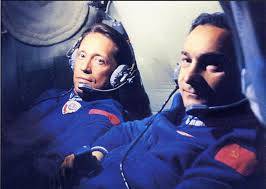
Left: Soyuz 22 spacecraft during final assembly and testing, showing the shroud for the MKF-6
camera in place of the docking apparatus at the top of the vehicle. Middle: The MKF-6 camera.
Right: Soyuz 22 crew of Aksenov (left) and Bykovsky.
To be continued…




